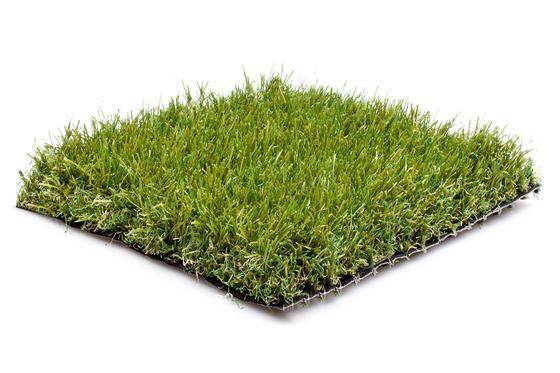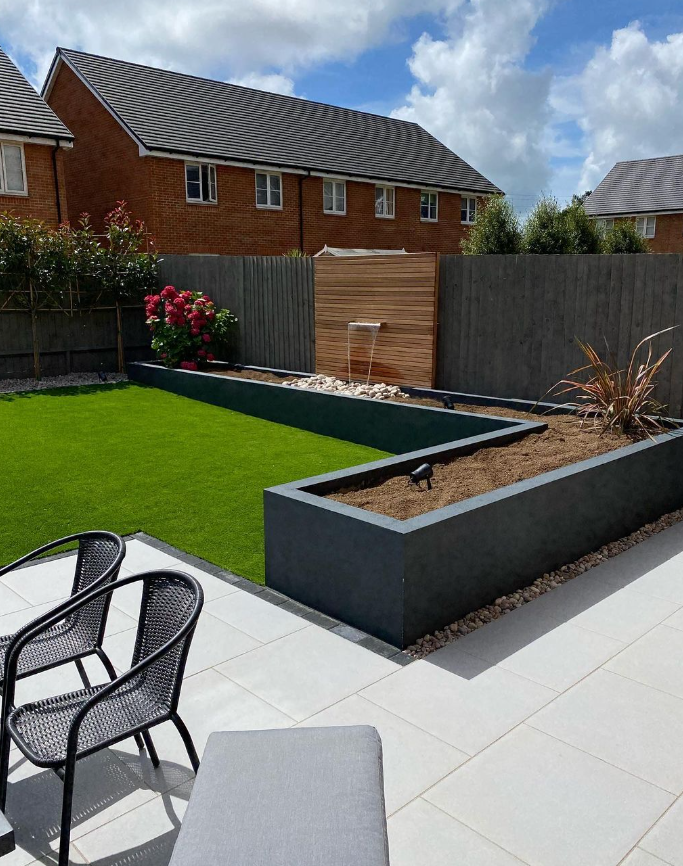
5 Steps When Caring for Artificial Grass During Wet Weather
Let’s face it — British weather isn’t exactly known for playing nice. So, if you’ve laid artificial grass in your garden, you probably already know how persistent rain can throw a spanner in the works.
Artificial grass and rain usually get along fine, but that’s only if your turf is set up to handle it. In some respects, wet weather turf care can be just as important as the install itself. Without it, you could see pooling, musty smells, and matted fibres — none of which scream “low maintenance.”
This isn’t about complicated upkeep. It’s more about regular habits that help protect your investment and keep your lawn looking good, even in soggy conditions. So, before the skies open again, it’s worth knowing what can go wrong, and how to make it right—quickly and simply.
Clear Surface Debris Regularly

Leaves, twigs, and general garden debris have a sneaky way of turning your artificial lawn into a soggy mess. The trouble is, even a thin layer of organic material can mess with drainage for artificial lawns, especially when it’s constantly wet.
The longer leaves or dirt sit on your turf, the more likely they’ll trap moisture underneath. That creates a damp, stagnant layer — a perfect breeding ground for moss and mildew. So, if your goal is low-fuss turf maintenance tips, this one does matter.
You don’t need fancy gear to keep things in check — a soft rake or stiff broom works well, as long as you’re gentle. Try clearing the surface at least once a week during rainy spells. If the weather’s been wild, give your lawn a quick once-over after each storm.
A clear surface doesn’t just look neater. It lets your turf breathe and drains as it should — even when the rain won’t quit.
Monitor and Maintain Drainage Systems
If your artificial grass looks more like a sponge than a lawn after rain, drainage could be to blame. Proper water flow under the surface tends to be the difference between a garden that recovers fast and one that stays boggy for days.
The real work happens below the turf. Most artificial grass is laid over a sub-base made of compacted aggregates, like MOT Type 1 or granite dust. These layers allow water to drain through and run off, rather than collecting at the surface. But if those layers become blocked or uneven, you’ll likely spot puddles and patches of mushy turf.
Every now and then — especially after a few heavy storms — it helps to lift the edges and check for signs of clogging or collapsed ground. You might not need to do this often, but spotting a small issue early can save a lot of hassle later.
Artificial grass and rain can coexist, but only if what’s underneath still does its job.
Gently Brush to Prevent Matting

Rain doesn’t just make everything wet — it can also weigh down the fibres in your lawn. Over time, that constant dampness pushes the grass blades flat, making the surface look tired and patchy. To prevent matting, gentle brushing is the trick.
It’s not about scrubbing or forcing the fibres back up. Being too rough can actually damage the turf. What works best is a soft but firm motion against the natural lie of the grass. That helps the blades stand up again and keeps the lawn looking fresh.
You could use a stiff outdoor broom, but if you’re after a more even result with less elbow grease, a power brush does the job well. These are designed for artificial grass, and they can lift the fibres evenly without too much effort.
A regular brush — even once every couple of weeks — can make a big difference during wetter months, keeping your lawn soft underfoot instead of flat and soggy.
Sanitise the Grass When Needed
Rain helps rinse away loose dirt, but it can’t always deal with what’s left behind — especially if you’ve got pets or a lot of foot traffic. Over time, moisture can trap bacteria or mildew between the fibres. That’s when turf cleaning becomes less of a bonus and more of a must.
Luckily, this bit’s not too hard. Here are a few low-fuss, eco-safe ways to freshen things up:
-
Diluted white vinegar – cheap, simple, and works well for odour control. Mix with water, spray lightly, and rinse off after 10–15 minutes.
-
Artificial grass cleaner – look for biodegradable formulas made for synthetic turf. These tend to deal with both smells and grime without harming the lawn.
-
Warm soapy water – good for spot-cleaning muddy patches or food spills.
Try to sanitise once a month during very wet spells, or more often if your lawn is used by pets. This keeps your garden safe, clean, and ready to enjoy — even in the rain.
Inspect for Moisture Damage

Most artificial grass handles rain just fine — but constant moisture, especially in neglected corners, can lead to issues that creep in quietly. Spotting the early signs is the first step in finding water damage solutions before they get costly.
Keep an eye out for:
-
Persistent puddles – these usually signal poor drainage or a sunken base layer.
-
Mildew or mould – typically found along edges, fence lines, or under shaded furniture.
-
Uneven patches – where turf feels spongy or soft underfoot, the sub-base might have shifted or compacted.
It’s not about checking every day — just being aware. Give your lawn a quick walkover after periods of heavy rain, and note any unusual smells or textures.
Fixes can be as easy as re-compacting the base, adjusting infill levels, or re-raking areas to lift airflow. And if something looks or smells off? Sorting it sooner helps avoid a bigger job later.
Artificial grass and rain do go together — as long as your lawn gets a bit of care when the weather turns wet. Keep it clear, brush it gently, check the drainage, and give it the occasional clean. It’s small stuff that, in a way, adds up to a garden that stays good-looking all year.


